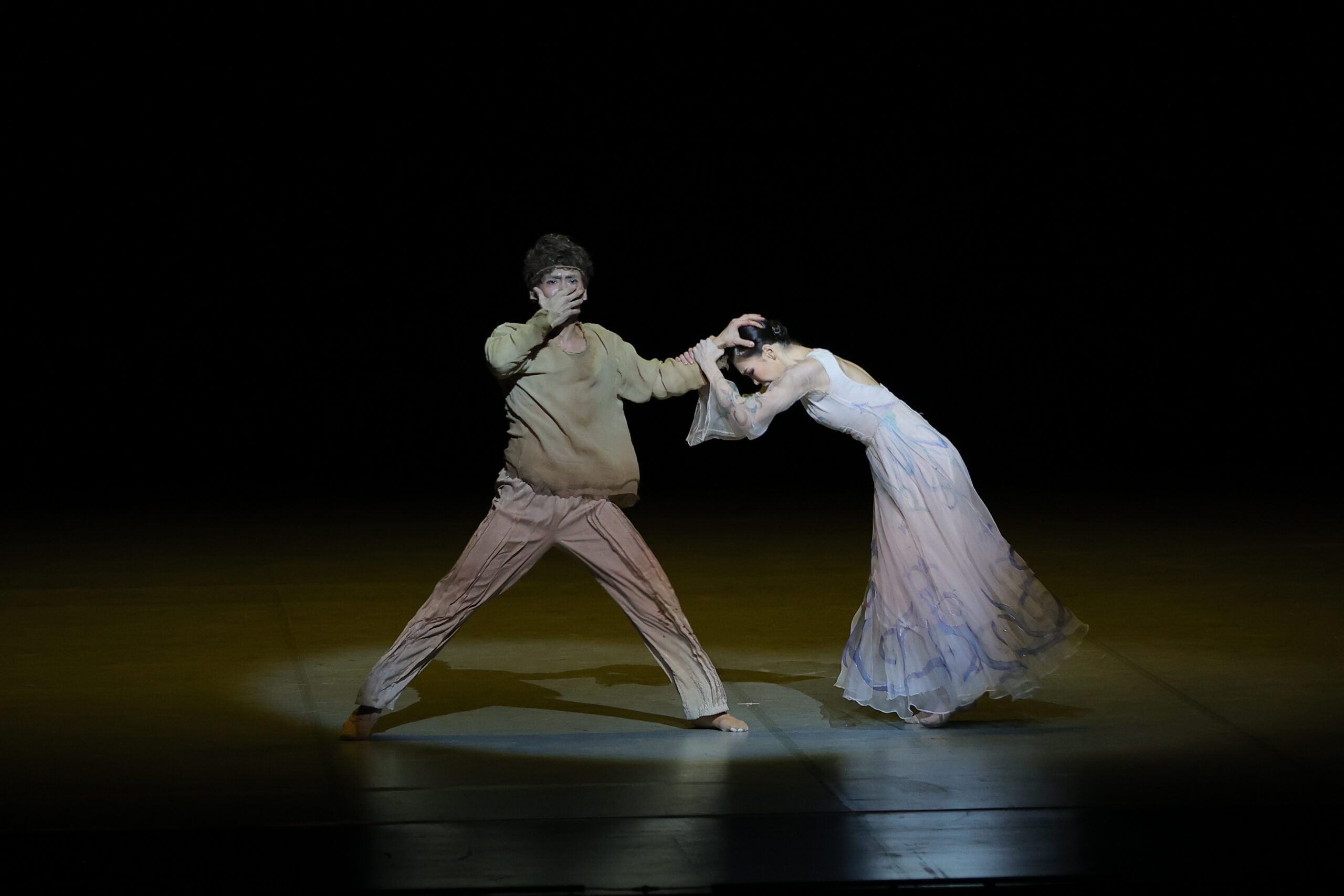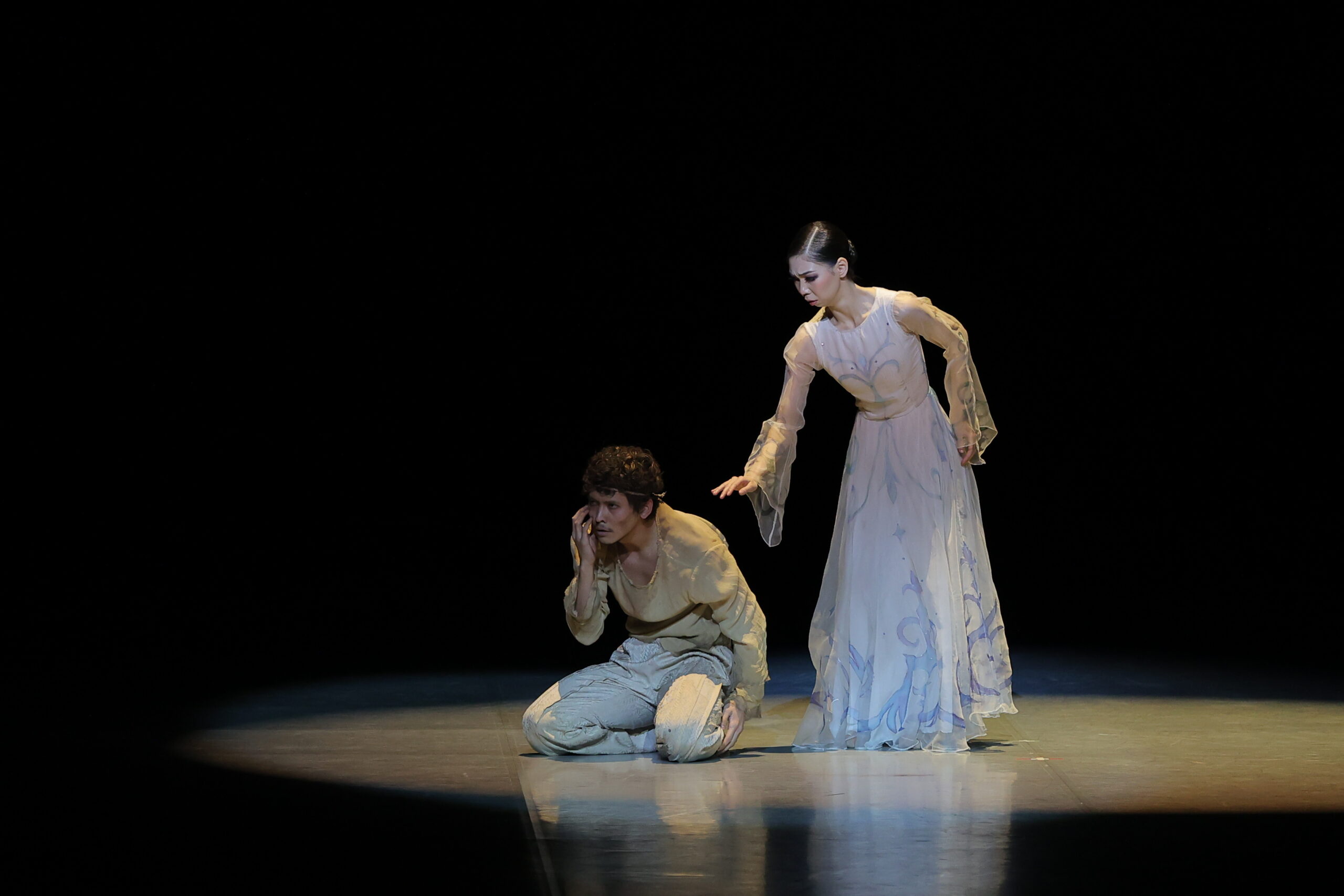ASTANA – Three premieres and a dozen of old favorites made for a memorable gala event, Dreams Come True, at Astana Opera on April 7.

The word mankurt refers to a war prisoner transformed into a memory-deprived slave. Photo credit: Astana Opera press service
The program featured the debut of the Spanish dance “Panaderos” from Alexander Glazunov’s ballet “Raymonda” along with two one-act ballet premieres by Astana Opera’s emerging choreographers: Aidan Kalzhan’s “Temptation” to Vittorio Monti’s music, and Sultanbek Gumar’s “Mankurt” (Ignoramus). Of these, the most luminous was “Mankurt” to music by Aktoty Raimkulova, arranged by the Turan ethno-folk ensemble.
The ballet is inspired by Chinghiz Aitmatov’s “The Day Lasts More Than a Hundred Years” novel, particularly by the story of a mankurt, a war prisoner transformed into a memory-deprived slave. Tragically, his mother, Naiman-ana, gets killed by her mankurt son when she tries to rescue him. Only in Gumar’s “Mankurt,” it is his wife who tries to free him from oblivion.

Whether the patience and love of mankurt’s wife has the power to heal remains a question left for the audience to answer. Photo credit: Astana Opera press service
“Who do we call mankurt nowadays? People who do not recognize their culture and language or show ignorance. The central figures in this performance are a mankurt and his spouse. Despite the immense challenges, those close to mankurt—be it a wife or a mother—nevertheless embraced them, reflecting a different depth of love prevalent in that era. Despite the adversity, his wife perseveres in her efforts to uplift him,” Gumar told The Astana Times.
As the haunting music fills the air, a figure emerges on stage, resembling either a madman or a tramp, but in truth, that’s a mankurt. Lost and disconnected, he roams aimlessly until his tender wife approaches him. Their dance unfolds, revealing glimpses of consciousness in his eyes. Whether her unwavering patience and love possess the power to heal remains a question.
There are several layers to the ballet, according to Gumar.
“Ruslan [Kanagat] and Limara [Aidarova] are young artists in the ‘Mankurt’ dance duet. If we view Ruslan’s [character] as representative of society, we could see many people who feel alienated within the society, many who fail to capitalize on their hopes and opportunities, and those who disregard their potential and allow it to wither away,” he said.
“Limara’s [character] embodies the concept of potential. Many individuals long for opportunities not within themselves but from external sources, often out of reach. Yet, these opportunities are always with us. Each opportunity is intertwined with an individual, with the notion that they possess the capability to seize it,” added Gumar.
Gumar is becoming experienced at choreographing ballets with a national pattern. After the premiere of his first ballet, “Ruh” (Soul), this is his second production, continuing the theme of Kazakh national ballet.
“The first dance I choreographed was ‘Ruh.’ If we could awaken the patriotism of the people through that dance, it means that everyone has a sense of patriotism inside. I staged this play [Mankurt] with the intention of being a patriot without succumbing to ignorance,” said Gumar.
“There are few Kazakh performances, but rich Kazakh history and culture offer ample material for ballet representation. I hope I will continue to move in this direction,” he added.


